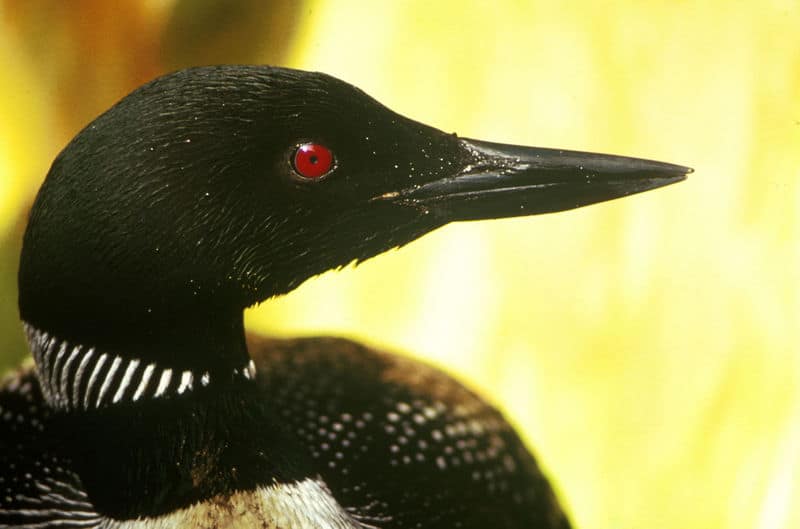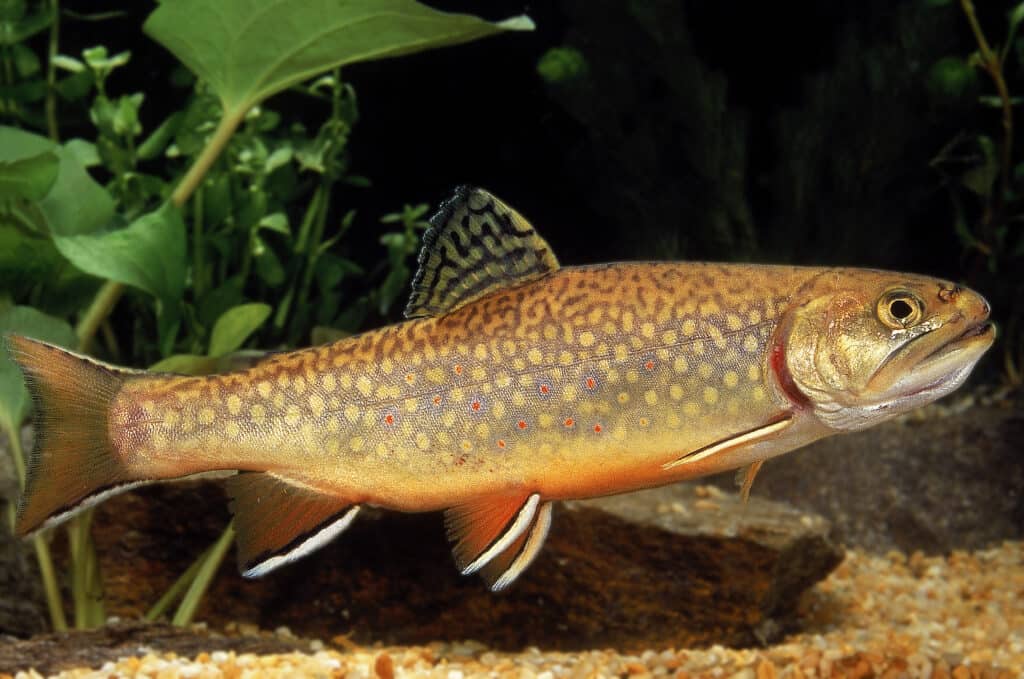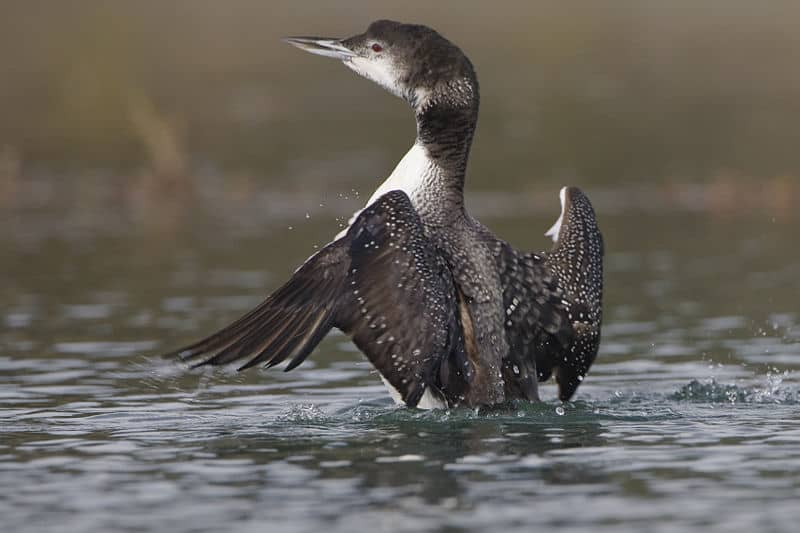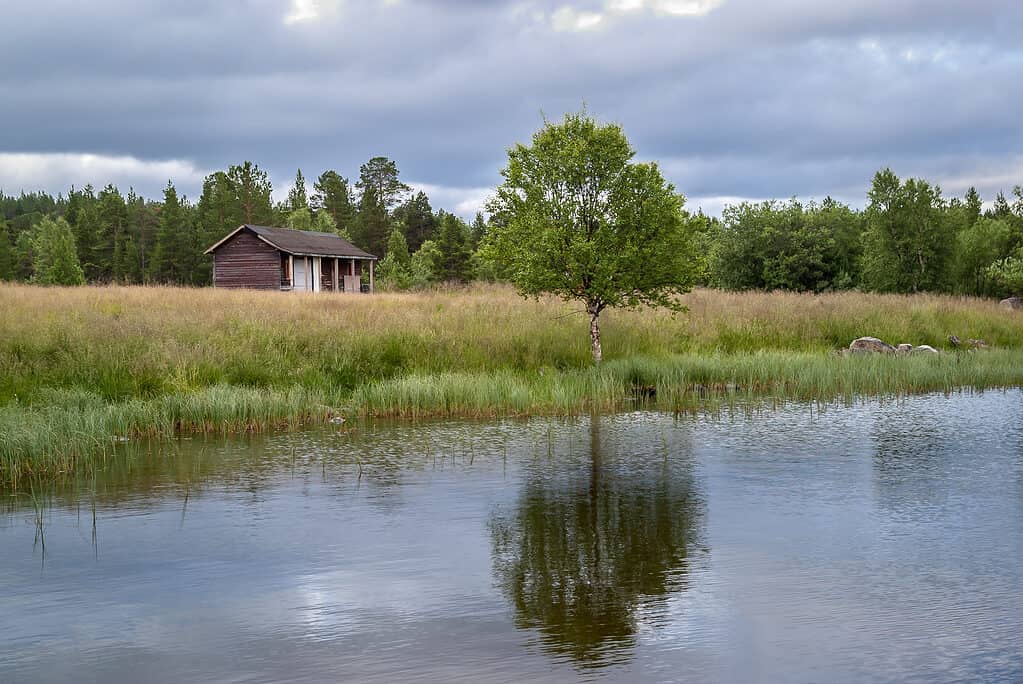Loons are a type of aquatic bird indigenous to North America and Eurasia. They are well adapted to life in the water. These birds have dense bones that help them plunge deep underwater in pursuit of prey. They also have webbed feet and short powerful wings that are as useful underwater as they are in the air. Their distinctive vocalizations are their calling card. They are familiar to fishermen and other frequent visitors to lakes and rivers. Yet, some species are conspicuously absent in winter. Where do loons go in the winter?

Loons are known for their distinctive calls, which can be heard echoing for miles across the waters of lakes and rivers.
©Art Weber – Public Domain
Description of Loons
Loons, also called divers, are waterbirds in the family Gaviidae. Bird watchers can identify them easily by their black and white feathers, set off with dark green or black on their heads and necks. In size, they range from 28-32 inches long and weigh from 9-12 pounds.
Loons eat fish like trout, salmon, or perch, as well as crustaceans, mollusks, amphibians, and aquatic insects. They are as good at swimming as they are at flying. Their aerodynamic bodies and short wings help them navigate in the air or water. Loons’ bones are dense, which helps give them concentrated mass for deep diving of up to 200 feet. They have a dense layer of feathers that insulate them from the cold. Because of this, they can stay underwater for up to a minute at a time. They speed after their prey underwater like torpedoes. Loons use their sharp beaks and claws to grasp their prey.

Loons eat small fish, including young trout.
©Slowmotion GLI/Shutterstock.com
Loon Mating and Reproduction
Loons return to the same breeding grounds every year. In spring and early summer, males loons establish and defend a territory and put on a courtship display. Males will throw back their heads and make loud calls described as “yodels,” “hoots,” and “wails.” Females observe all this closely and choose a male they believe will be a good mate. It’s a big decision, as loons mate for life.
Once paired off, couples work together to build nests out of grass, moss, and leaves. They usually choose a spot on the shore or on a small island. Females lay 1-3 eggs and the parents work together to incubate them and guard the next for 28 days. The couple continues to cooperate to feed their chicks, who remain with their parents for several months. During this time, they learn to fly, swim, and feed themselves.

Loons use various vocalizations and physical displays during mating and to defend their territories.
Where Do Loons Go in the Winter?
Loons migrate in flocks annually between their breeding and wintering grounds. Seasonal changes in the length of the day, the temperature and weather, and availability of food signals loons that it’s time to migrate.
The Pacific loon migrates long distances, while others like the common loon migrate shorter distances. North American loons migrate south from September to November to spend the winter in the south on the Atlantic and Pacific coasts and the Gulf of Mexico. From April to June, they return to their breeding grounds in the Great Lakes region and the northern United States and Canada. Species that are native to Eurasia spend the winter along the Mediterranean coastlines and warmer parts of Asia before returning to their northern breeding grounds in spring.

Loons migrate great distances every year.
©iStock.com/Tammi Mild
The Role of Loons in the Ecosystem
Loons help control the population of fish and other aquatic wildlife to maintain an ecological balance. Since they need clean bodies of water to find good food sources and reproduce, the presence or absence of loons can indicate how healthy and pollution-free the aquatic ecosystem is. Biologists monitoring the environment can use loons as an indicator species that aids them in creating strategies for conservation efforts.

The presence or absence of loons can be an indicator of the health of an aquatic biome.
©Plam Petrov/Shutterstock.com
Loon Habitats
Loons live in North America, Europe, and Asia, typically around freshwater lakes and rivers, but can also be found in saltwater coastal bays and inlets. They prefer large, deep lakes and rivers with clear water and rocky shores for breeding. They seek out undisturbed areas with natural shorelines and minimal human development. Habitat destruction, fragmentation, and pollution caused by human activities are major threats to loon populations, as it reduces the available breeding, feeding, and wintering habitat.

Loons seek out undisturbed areas with natural shorelines and minimal human development.
©William Gottemoller/Shutterstock.com
Loon Conservation Efforts
Loons are considered of special concern by conservation organizations. Environmental threats from pollution and development activities have caused a decline in several loon species. Three North American species are decreasing in number (the Arctic loon, red-throated loon, and yellow-billed loon); one is stable (common loon); and one is increasing (Pacific loon). Only 2,600 loons are left in Europe, according to The International Union for the Conservation of Nature (IUCN), but the American population is over 638,000. These are examples of some of the ways conservationists are trying to preserve and increase the populations of endangered loon species:
- Habitat protection and restoration in wetlands and shoreline areas.
- Pollution control to reduce the effects of pesticides and fertilizer run-off, oil spills, plastics, and sewage.
- Research to monitor loon behavior and populations to identify threats.
- Education and public outreach to help people understand the ecological significance of loons and how we can help protect them.
- Laws and regulations like the U.S. Migratory Bird Treaty Act and the U.S. Endangered Species Act provide crucial multinational structure to conservation efforts.

Water pollution is one of the greatest threats to loon populations.
©JFVelasquez Floro / Creative Commons – License
Where Can You See Loons in the Winter?
Some of the most popular locations for viewing loons in the winter include:
- Chesapeake Bay in Maryland and Virginia, where thousands of loons gather during the winter months.
- The Gulf of Mexico, where loons can be seen along the coasts of Texas, Louisiana, Mississippi, and Florida.
- The Pacific Northwest, where loons can be seen along the coast of Oregon and Washington.
- The Great Lakes region, where loons, usually the Red-throated loon, can be found on Lake Michigan.
Loons can be unpredictable from day-to-day, so sightings aren’t guaranteed. The best way to increase your chances of seeing a loon is to go to a known loon wintering area during the winter months. Keep your distance and take care not to disturb the area so the loons can continue to thrive for generations to come.

Chesapeake Bay in Virginia and Maryland is a great place to observe loons in season.
©Lou Taylor/Shutterstock.com
The photo featured at the top of this post is © iStock.com/BrianLasenby
Thank you for reading! Have some feedback for us? Contact the AZ Animals editorial team.







